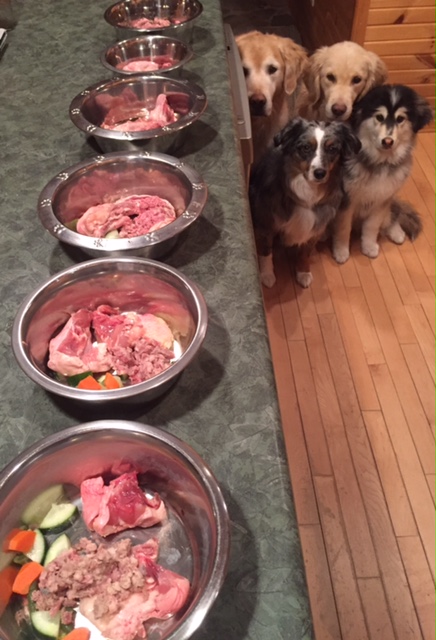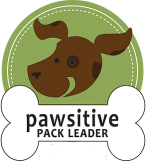Why I Chose Raw For My Dogs
In 2011, after losing my dog to cancer, I started to take a serious look at what my dogs were eating. What an eye opening experience that was!
I started to understand why Buddy had a “doggy odour”, why Maggie’s breath would clear the room and why Koda just simply refused to eat.
Koda’s refusal (or insistence for better food) was the final push I needed to make the leap to raw.
The research and benefits made perfect sense but I was equally as nervous as you may be feeling right now.
Finally the day came, our first purchase was made and that started the journey to having happier and healthier dogs.
Everything I was reading; the benefits, the simplicity to switch, and having more control of what my dogs were actually eating was all proving true.
The health benefits were noticeable very quickly…
Buddy’s fur was softer, his poops were formed and had no odour! Maggie’s breath had NO odour. (I could not understand how such a pretty girl could have such bad breath! I would refrain from petting her so to not excite her and make her pant…yuck!) And our Koda was now happy to eat!

Raw Benefits
There are many benefits to a Raw Fed Diet that a commercially processed diet just does not compare.
Teeth, Breath & Oral Health
- The natural bone in a raw diet acts as a tooth brush to help keep dogs teeth clean & eliminate plaque
- Bad doggy breath will be gone!
Stronger Immune System
- A raw fed diet supports & strengthens the Immune System
- Higher quality protein, natural fats & less carbohydrates
- Improved Digestion
Firmer Stools (YES It is all about the poop!)
- No odor
- Firmer & smaller
- The body absorbs are the healthy nutrients of a raw diet & therefore less excrement to pick up
Shiny Coat & Improved Skin
- Itchy skin & doggy odour can relate to by products, artificial flavours & preservatives in commercial foods
- A raw fed diet makes for skin soft coats & improved skin condition
- NO more doggy odour!
Leaner Body
- It is much easier to manage a healthy body weight on a raw fed diet
- More energy
- Healthy Life Span
More Control of What your dog is eating
- Allows you to rotate what proteins your dogs is eating each meal
- You add the supplements
- It really is fun to feed Raw!
How To Transition To Raw
Transitioning to Raw is a very simple and seamless process. It is best suggested to make a full switch from kibble to raw.
- Allow your dog to fast for at least 8-12 hours between their last kibble meal and their first raw meal. This will allow their digestive system to empty
- For the first few days, allow the raw to come to room temperature. This will allow for a softer transition and decrease the chance of vomiting if eaten too quickly or too cold
- For fussy or picky eaters we suggest searing or pan fry the raw food, decreasing the searing each day until a full raw meal is served (3-4 days)
- Limit the protein choices in the first few weeks to determine any sensitivities
- Start with Turkey, Chicken, Duck or Rabbit
- Beef, Pork, Lamb and Fish can be introduced once the complete transition to raw has been made
Raw Frequently Asked Questions
RAW food for Cats.
The following is an excellent read about feline diabetes and the influence of diet.
- Cats are carnivores. They can NOT have any fruit or vegetables. Unlike dogs their system can not metabolize fruit and vegetables. They are 100% carnivores and require just meat, bone and organ meats to complete their diet. They also can not have any rancid meats, so tripe is not recommend for cats.
- Cats need a higher percent of phosphorus (meat) and a lower percent of calcium (bone) to make their diets complete. Cats can also experience constipation quicker than dogs, so keeping their diet high in meat is essential.
- Cats require Taurine. This mineral is essential to their diet, and if not included in their diet would be determential to their health. Taurine is naturally found in raw meats, but particularly hearts and livers.
- Cats are very picky eaters (generally) and are very sensitive to changes in their diet. Cats that have always eaten dry foods, typically have more difficulty switching to raw than cats that have eaten moist or canned food. Temperature is also a factor, so feeding at room temperature is recommended. Cats must eat regularly, so we do not recommend a fast of 12-24hrs (as we do with dogs). Mixing the raw into their meals although is not ideal, is a common method to transitioning cats.
- Cats require Omega 3 Fatty acids but these must be a fish oil (we suggest Herring oil). Omega 3’s such as flax or seed oils can not be converted or used by cats. All BCR Blends require supplementation with an Omega 3 Fatty Acid.
Big Country Raw’s Feline Formula contains a higher percent of meat and a good source of taurine (particularly liver and heart). If you do have clients that wish to try more options for their cat, the following choices would be good to consider:
- Turkey Salmon Lamb
- Pure Rabbit
- Pure Duck
- Pure Beef
- Pure Lamb
- Pure Turkey
We do not suggest offering them any of the following
- Any BCR Dinner
- Pure Chicken (too high in bone)
- Pure Salmon, Pure Mackerel – DO NOT contain organ meats which is essential to their diet.
